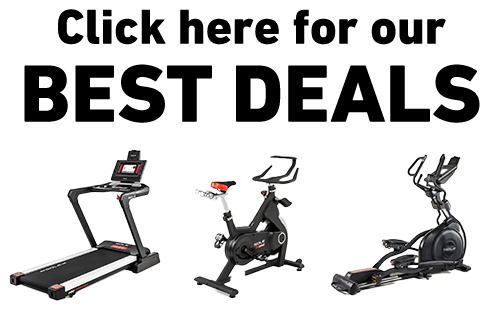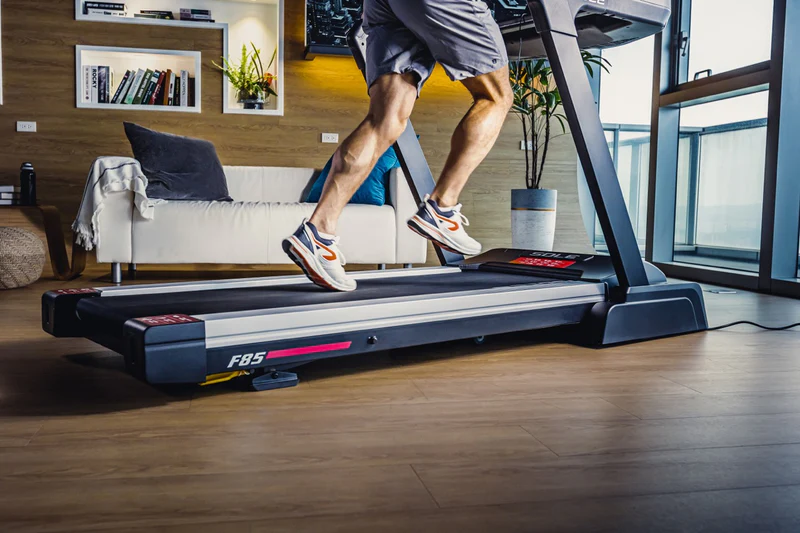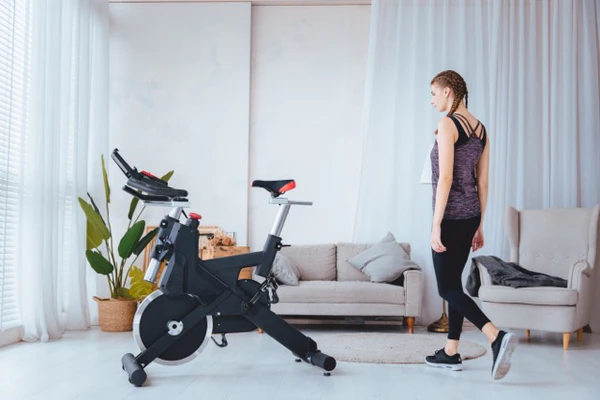Key Takeaways
- The treadmill primarily targets the hamstrings, quads, glutes, hip flexors, and calves through natural running and walking mechanics.
- Incline settings on a treadmill intensify the workout for your glutes and calves while increasing calorie burn.
- Running engages significantly more muscles than walking, including your core and upper body for comprehensive fitness.
- Strategic workout variation engages different muscle groups while preventing adaptation plateaus and maintaining training effectiveness.
- SOLE treadmills like the F65 and F85 feature 15-level incline precision plus decline capability of models like F89 and TT8, to target specific muscle groups.
What Muscles Does the Treadmill Work?
Using a treadmill is one of the most efficient and accessible ways to improve cardiovascular health and build muscular endurance. But alongside cardiovascular benefits, it also works numerous muscles in your body based on the speed and incline settings.
|
Award-Winning Commercial-Grade Treadmills for Your Home
Why Choose SOLE: ✓ Commercial-grade steel frames with up to 4.0 HP motors 30-Day Money-Back Guarantee: Love it or return it, no questions asked. |
Main Muscles Worked
The muscles in your feet and ankles work hard to keep your steps steady and absorb impact.
When you train on a treadmill, several key muscles activate systematically:
- Hamstrings: Located at the back of your thighs and responsible for knee flexion and hip extension. They provide crucial propulsive force in moving you forward through each stride cycle.
- Quadriceps: Located at the front of your thighs, these muscles control knee extension with each step while providing stability during landing phases.
- Glutes: The powerful muscles in your buttocks, essential for hip extension, stabilization, and maintaining proper pelvic alignment during movement.
- Hip Flexors: Found at the front of your hips, they elevate your thighs and help maintain stride efficiency, especially when you increase speed or utilize incline settings.
- Calves: These muscles at the back of your lower legs generate the push-off power with each step and provide essential propulsion during the toe-off phase.
Supporting Muscles
In addition to the primary muscles, numerous supporting muscles also contribute during your treadmill workout:
- Core Muscles: Your abdominals and lower back maintain posture and stability. A strong core is essential for staying balanced, especially at higher speeds or during incline training.
- Upper Body Muscles: Your arms and shoulders become active when you naturally swing your arms while walking or running. This enhances balance and stride efficiency while engaging additional muscle groups.
- Feet and Ankles: The intricate muscles in these areas work to provide stability and absorb impact, helping to prevent injuries and maintain proper biomechanical form.
Incline vs Flat: Which Muscles Get the Focus?
Changing the incline on your treadmill can make a big difference in which muscles you’re targeting:
Incline Workouts
Setting your treadmill to an incline puts more focus on your glutes and calves. Walking or running uphill makes these muscles work harder, giving you a tougher workout.
Flat Surface Workouts
On a flat treadmill, your quads and hamstrings share the load more evenly, offering a balanced workout for your legs.
Decline Setting
Running or walking on decline puts additional emphasis on your quadriceps and requires enhanced eccentric muscle control which helps develop these muscles and improve leg stability while providing unique training stimulus.
Maintain good posture and activate your core to enhance stability and prevent injuries during your run.
Strengthen Your Stride
To get the most out of your treadmill workouts, try these tips:
- Change Your Speed: Switch between walking, jogging, and running to work different muscle groups and keep your workout interesting.
- Use Incline: Add incline settings to focus more on your glutes and calves.
- Pay Attention to Form: Keep good posture and engage your core to improve stability and avoid injuries.
- Try Interval Training: Mix up your workout with intervals to boost muscle engagement and cardio fitness.
- Add Strength Training: Pair your treadmill workouts with strength training to build overall muscle strength and endurance.
Maximize Your Muscle Development with SOLE's Superior Treadmill Technology
SOLE's advanced treadmill features enable precise muscle targeting through superior incline control and biomechanically optimized design.
SOLE treadmills deliver the precision and performance needed for targeted muscle activation that standard treadmills simply cannot match.
The F65 provides 15-level incline adjustment that shifts emphasis to your glutes and calves; the difference between 0% and 15% incline can double your muscle activation and calorie burn.
The F85 takes muscle targeting further with both 15-level incline and 6-level decline capability, allowing you to emphasize different muscle groups within the same workout. This comprehensive range makes SOLE treadmills superior to basic models limited to incline-only adjustment.
SOLE's Cushion Flex Whisper Deck technology ensures optimal muscle activation while protecting your joints through 40% impact reduction. This means you can train at higher intensities and longer durations without the joint stress that limits muscle development on rigid decks.
The commercial-grade of our treadmill models including the ST90, TT8, and F80 with motors that range from 3.0–4.0 HP, maintain consistent belt speed under load. This ensures your muscles work efficiently throughout every stride.
The F89's 21.5" HD touchscreen provides guided muscle-targeting workouts through the SOLE+ App, with programs specifically designed for glute activation, hamstring development, and comprehensive lower body strength. These guided sessions take the guesswork out of muscle targeting while ensuring progressive overload.
With lifetime warranties on frames and motors, your SOLE treadmill supports years of intensive muscle-building sessions. The precision engineering ensures consistent performance whether you're doing gentle walking or high-intensity incline running.
Shop our treadmill collection today!
Frequently Asked Questions (FAQ)
What muscles does a treadmill work?
A treadmill mainly works your hamstrings, quads, glutes, hip flexors, and calves. These muscles are key for moving and staying balanced, making them the main focus during your treadmill workout.
How does running on an incline affect muscle use?
Running on an incline makes your glutes and calves work harder because of the added resistance. This gives you a tougher workout, helping to build muscle strength and endurance.
How often should I change up my treadmill workouts?
To keep your workouts interesting and ensure all your muscles get a good workout, it’s a good idea to mix up your treadmill routines regularly. Try different speeds, inclines, and intervals to engage various muscle groups and keep your routine fresh.
Why should I choose a SOLE treadmill for my workouts?
SOLE treadmills, like the F65 and F85, are known for being durable and performing well. With features like precise incline settings, they help you target specific muscles and track your progress, making them a solid choice for anyone serious about fitness.



Leave a comment
This site is protected by hCaptcha and the hCaptcha Privacy Policy and Terms of Service apply.